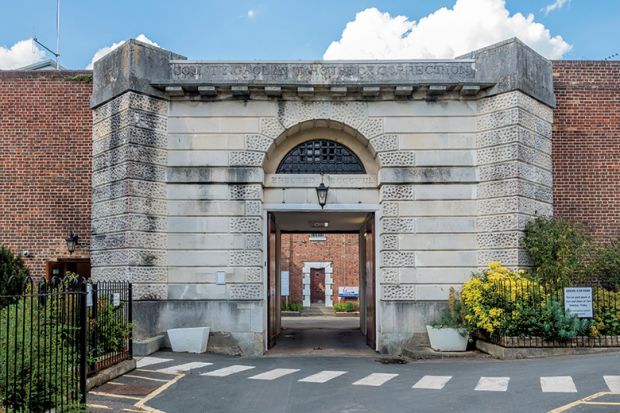There are British universities that own castles, grottoes and even a sewage plant. But Rama Thirunamachandran, at Canterbury Christ Church University, is proud to be the only vice-chancellor who has purchased a prison.
When Professor Thirunamachandran took up the job in 2013, he said that he “wouldn’t get sidetracked into becoming a property developer”. Nevertheless, when the 5-acre prison site adjacent to the university’s main North Holmes campus came up for sale, buying it was simply “a no-brainer”, he said.
The former governor’s house has already been refurbished as a teaching room. The land around the prison will be used for a new 20,000 square metre building, due to open in 2020, devoted to engineering, science and, perhaps, medicine, if a bid to create a medical school with the University of Kent is approved. There will be a new university square for eating, socialising and hosting outdoor events. And, because the university forms part of a World Heritage Site, some unattractive buildings will be cleared away and the original pilgrims’ route linking St Martin’s Church (said to be the oldest in the English-speaking world) and Canterbury Cathedral will be restored.
But what about the prison itself? One wing will be pulled down and another stripped out and converted into a student hub. However, the octagon-shaped entrance and the prison’s A Wing are listed and cannot be destroyed or altered significantly.
On Professor Thirunamachandran’s first visit to the site in 2013, a door jammed and he, his director of estates and the security guard almost got themselves locked him. He would no doubt like that to be the last such incident as, over the next decade or so, he hopes to turn the Octagon and A Wing into a publicly accessible heritage centre covering the history of the nearby ruined St Augustine’s Abbey as well as the prison itself. Yet he admitted that “there’s quite a lot of refurbishment to be done” in transforming what now amounts to rows of “cells with individual loos”.
Plans for the heritage centre, a website about the history of the prison and other outreach activities are being taken forward by Maryse Tennant, senior lecturer in the School of Law, Criminal Justice and Computing at Canterbury Christ Church, a crime historian who joined the university just when it was considering buying the prison.
Dr Tennant is tracing the broad history of the prison, which opened in 1808 and was in use until 2013 (apart from two decades as an archive storage facility), albeit serving at different times as a local prison, a training prison, a naval detention centre and, most recently, a prison holding foreign nationals.
“I was struck by how rich the history of a fairly ordinary prison could be,” she said. “Most research has been done on convict prisons rather than local prisons.”
The research is unearthing many poignant individual stories. Twelve-year-old Caroline Charlesworth, born in 1848, was imprisoned for a month for stealing 24 yards of cotton print. A second offence two years later, this time involving the theft of a child’s robe, led to three years’ penal servitude.
James Ells, who was born in 1864, was at the age of 17 imprisoned for a month for stealing apples. He was later accused of stealing three fowls and again sent to prison. After being discovered concealing some tobacco, he received the “additional punishment” of being locked up for 24 hours in a dark cell – and decided to hang himself.
“There are lots of things I’m aware of on an abstract basis and teach my students,” explained Dr Tennant, “but to see them in the people’s lives you are recreating is quite emotional.” Particularly moving were the letters from men convicted of murder, mostly from the mid-20th century, which were copied out and sent to the Home Office to feed into decisions about whether the criminals deserved the death penalty.
As the project developed, Dr Tennant was keen to interview former prisoners and staff. “I am interested in how the archival material can be presented,” she added, “and hope to create a more critical interpretation than is normally found at prison heritage sites where, particularly if they closed quite recently, it is often dominated by the perspectives of prison staff.”
This leaves only one unanswered question. Canterbury Christ Church emerged out of a teacher training college established on the site in 1962. So what were relations like between the prison, its educational neighbour and the local community over the following decades?
“The borstal boys were involved in archaeological digs at St Augustine’s Abbey,” responded Dr Tennant. “And there is a tall tower on the campus. There are stories of women flashing over the prison walls, which led to the raising of their height.”
后记
Print headline: Once a lock-up, now a site to lock in learning




